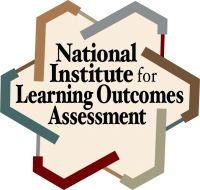Description
This assignment was designed for an introductory international studies course that serves as a requirement for the university’s general education curriculum. The challenge of the course is to get students excited about international studies and to make them aware of how increased global interdependence affects them. Students who successfully complete the assignment are able to narrowly define a topic, explore it through two sources from two different social sciences, and construct a short essay that uses information ethically and legally.
Background and Context
This assignment was designed to mainly assess two DQP proficiencies; knowledge and intellectual skills, specifically specialized knowledge and use of information resources.
The assignment was used in the International Studies course Human Societies and Globalization. This is the introductory course to the International Studies major, but it also serves as a core requirement for the university’s general education curriculum. As a general education requirement the course sections are large with over 100 students, and the enrollment is overwhelmingly freshmen who are encouraged to take these courses during their first year. The course in which I implemented the assignment had 144 students. Many students in the course were fulfilling the general education requirements and are upfront about their lack of interest in many of the topics we cover. Therefore, the challenge was not only to get them excited about International Studies but to make them aware of how increased global interdependence affects them in different ways.
I developed the assignment to encourage students to explore some of the topics we discussed in class in more detail while demonstrating the course learning outcomes. I included several steps in the assignment directly linked to the learning outcomes of the course; recognizing the disciplines of the social sciences and the research methodologies typically associated with each one. The assignment was also designed to assess in-class activities and how well students were able to replicate the exercises and case studies we did during lecture. Students who successfully completed the assignment were able to narrowly define a topic, explore it through two sources (articles) from two different social sciences, determine methodology used in each source, and construct a short essay that demonstrated the use of information ethically and legally.
Reflections
One of the challenges of teaching large lecture-based courses without assistance is that student assessment relies mainly on multiple choice questions. This makes the workload manageable for the instructor but there are learning objectives that cannot be measured using scantrons. I try to include some form of short and clearly defined writing assignments that are easy to set up and grade. In designing these assignments I use Blackboard which makes it easier to manage grading in a large class.
This assignment was difficult to write because I was trying to do too many things and it took several drafts before I narrowed it down to two proficiencies. I was concerned about how effective the rubric would be in both grading and providing students with a better understanding of the purpose of the assignment. Because it was the first time I tried this assignment I went over it in detail during class. I still got many questions from students mainly dealing with whether the topic they chose was ok. They seemed to know what they wanted to explore but wanted my approval. I did not anticipate this in designing the assignment and it might have something to do with how the instructions were worded. I was pleasantly surprised by the end results. For the most part students did follow the instruction and were able to locate two sources in two different social sciences dealing with the same topic. However, there were still some students who just focused on one source or one discipline. Another observation was that their comparison was between the information found in the articles rather than the methodology. I do think that this assignment might be too ambitious for an introductory course.
In future when I use this assignment I will focus on assessing students’ ability to narrow a topic, find information in two sources or even more from different social sciences dealing with the same topic and synthesize the information found in the course into a coherent short essay. I will not ask for a comparison of methodologies used in obtaining the data in the source. I also have to reiterate at different times throughout the course the meaning of scholarly peer-reviewed articles.
Please select an option
The assignment library and the assignments within are licensed under a Creative Commons Attribution 4.0 International License. By clicking “Ok” you agree to cite each assignment (including modifications), with the provided citation on the assignments downloaded from this site.
OK

